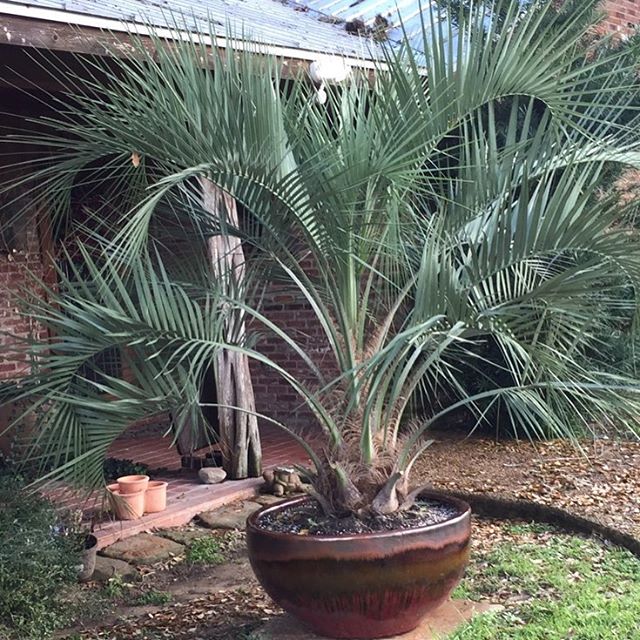I have never considered adding a pindo palm to my landscape because of the heavy clay that I live (and garden) in. But Alvin’s latest “freeze fix” has me reconsidering.
One of Alvin’s friends, who had suffered suffered freeze damage a few years ago, asked about some cold-hardy alternatives.

He said PINDO – and she kicked it up a notch with an incredible pot! This combo has me strolling through my yard looking for a plain spot that could use a gorgeous focal point.
Pindo Palm Facts
The Pindo Palm or Butia capitata grows natively in Brazil and Uruaguay. Its mature height is 20 – 25 feet tall. This slow grower is a water-wise (i.e. doesn’t need alot) plant. It also has a high salt tolerance, making it a great choice for coastal areas.
Pindo Dis-likes
There are just two things that a Pindo Palm does NOT like:
- Heavy clay soil
- Having wet “feet”
A pindo palm finds both of the above conditions completely intolerable! The clay ties up nitrogen particles causing a plant to look yellow and sickly. Having continually wet roots (or “feet”) has the very same effect. If you have these conditions, consider planting your pindo in a container, planting it on a berm, and definitely amend, amend, amend, your clay soil.
Want to Know More?
For more information, click here for a downloadable pindo information sheet.
